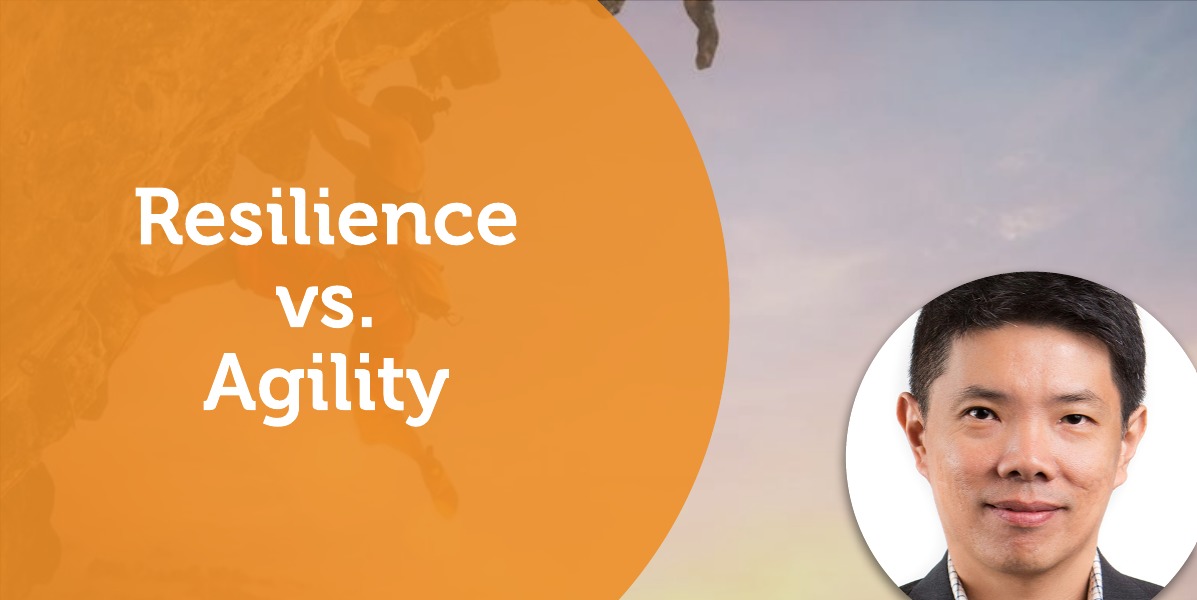 A Coaching Power Tool Created by Daniel Chng
A Coaching Power Tool Created by Daniel Chng
(Business Coach, UNITED STATES)
2020, a new decade. Who could have guessed that this year would be a pivotal point in human history? The COVID-19 pandemic has alternated the very fabric of society beyond our imagination. The impact has been felt globally. It has changed our approach to health, our economy, and social interaction. As a coach, are we ready to adapt to this phenomenon? In these challenging and uncertain times, we need to find and build our resilience and agility!
So what are resilience and agility? If we refer to the Oxford Dictionary:
Resilience: /rɪˈzɪlɪəns/
noun
- the capacity to recover quickly from difficulties; toughness. “the often remarkable resilience of so many British institutions”
- the ability of a substance or object to spring back into shape; elasticity. “nylon is excellent in wearability, abrasion resistance and resilience”
Agility: /əˈdʒɪlɪti/
noun
- ability to move quickly and easily. “though he was without formal training as a dancer or athlete, his physical agility was inexhaustible”
- ability to think and understand quickly. “games teach hand-eye coordination, mental agility, and alertness”
But merely referring to the literal meaning only helps us understand what it is, so let’s put things into perspective and see if we can use it as a ‘tool’ to help us in coaching.
Coaching Application
Resilience
Do not judge me by my success, judge me by how many times I fell and got back up again.― Nelson Mandela
Let us first define what it is for humans to be resilient. (resiliency) Resilience is a person’s ability to adapt and bounce back when things don’t go as planned. Resilient people don’t dwell on setbacks, they acknowledge the situation, learn from their shortcomings, and then move forward with conviction and purpose.
According to the research of leading psychologist, Susan Kobasa, three elements are essential to resilience:(1)
Challenge – Resilient people view difficulty as a challenge, not as a paralyzing event. They look at their failures and mistakes as lessons to be learned from, and as opportunities for growth. They don’t view them as a negative reflection on their abilities or self-worth.
Commitment – Resilient people are committed to their lives and their goals, and they have a compelling reason to get out of bed in the morning. Commitment isn’t just restricted to their work – they commit to their relationships, their friendships, the causes they care about, and their religious or spiritual beliefs.
Personal Control – Resilient people spend their time and energy focusing on situations and events that they have control over. Because they put their efforts where they can have the most impact, they feel empowered and confident. Those who spend time worrying about uncontrollable events can often feel lost, helpless, and powerless to take action.
So as a coach, to be of service and help to our clients, I would like to use the analogy of the emergency oxygen mask on an airplane. When it’s activated, we need to put the mask on ourselves first before we tend to those under our care. Just as in coaching, we need to build our own resilience before we can help others. Here is my three-step approach:
Agility
Agility is our ability to respond swiftly, decisively, and appropriately. Agile individuals will be able to do this with ease and comfort. During challenging times, agility is the ability to remain calm and productive, to seek out knowledge and information where it is available, and to act on opportunities that will help us adapt to this new normal.
What can we do to cultivate our own ability to remain agile? Here are the 3 things that we can do:
When you combine both resilience and agility, its ‘power’ enables us to stay strong, adapt, and take the necessary actions needed in these uncertain times to help ourselves and everyone around us to continue moving forward and thrive.